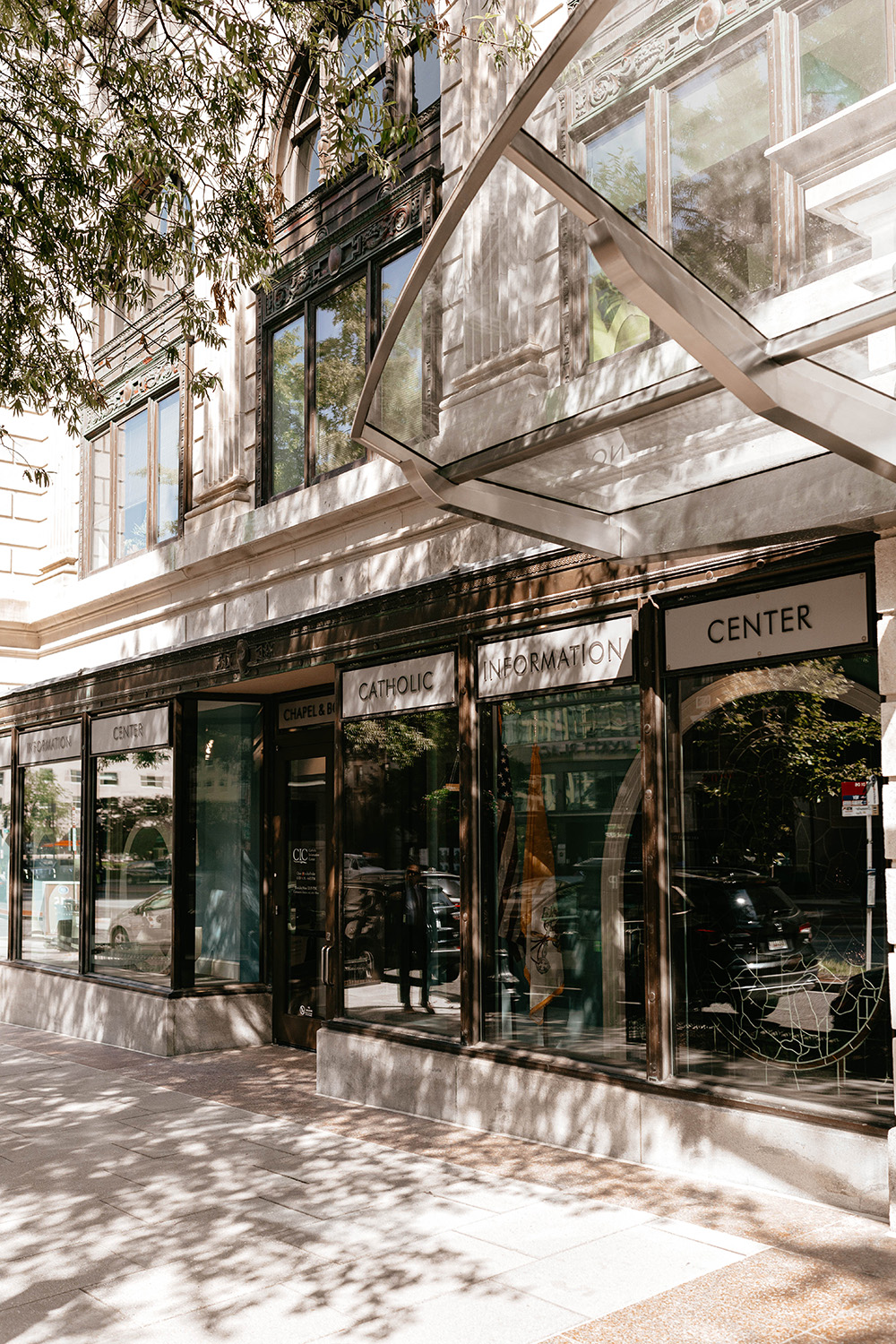
By Kurt Jensen
WASHINGTON (OSV News) — When Father Charles Trullols was growing up in Spain, solemn Eucharistic processions on the streets were a regular part of the Catholic way of worship. The director of the Catholic Information Center in Washington for the past six years wants to start his own annual tradition for the CIC.
The priest, who is part of the Opus Dei personal prelature, has not yet seen anything comparable in the U.S. with Europe’s Eucharistic processions — not the street processions, anyway.
On June 19, 2022, for Corpus Christi Sunday, both the Cathedral of St. Matthew Apostle and the Basilica of the National Shrine of the Immaculate Conception in Washington, like parishes nationwide, held outdoor Eucharistic processions to mark the beginning of the three-year National Eucharistic Revival initiative of the U.S. Conference of Catholic Bishops.
Unlike large processions that circle churches, the procession Father Trullols has in mind aims to bring the Eucharistic Jesus literally out into the public square.
“The Eucharist is the source and summit of the whole Christian life. A Eucharistic procession, therefore, is a public witness of the veneration toward the most holy Eucharist, conducted through public streets,” states the center’s registration page for the event.
The approach shares similarities with a 2019 Corpus Christi procession with 350 Catholics walking more than a mile from Holy Comforter–St. Cyprian Church to St. Joseph’s on Capitol Hill, carrying the Eucharist past the U.S. Capitol and Supreme Court.
Father Trullols is planning a Saturday, May 20, procession — not connected to any liturgical observance — through downtown Washington.
Father Trullols said he found inspiration from his seven years in Rome participating in the Eucharistic processions of St. John Paul II. “Those were really beautiful,” he told OSV News.
He suggested it to his board last fall, and has planned it “on a very strict budget,” Angelica Tom, the CIC’s development associate, told OSV News.
The procession begins May 20 with a 9:30 a.m. Mass at the CIC, which is about two blocks from the White House. The route is about a mile in length, and includes Farragut Square, Lafayette Square and McPherson Square. The procession will take about an hour to complete and will end at noon. It will have two altar stations for prayer and for the relaying of the monstrance holding the Eucharist.
The May 20 date was chosen for the probability of temperate weather “so families can come in the morning,” Father Trullols said. “The streets are quiet at that moment.”
Father Trullols noted that he has received support from parishes in Virginia and Maryland as well as the District of Columbia.
While Father Trullols is an Opus Dei priest, the CIC is a corporation of the Archdiocese of Washington, not the prelature, and follows archdiocesan policies.
The CIC offices underwent an extensive renovation last year, and its chapel can hold about 80 seated.
“We’re going to test the limits come procession day,” Father Trullols said.
Although on Lafayette Square at one point, the procession does not go directly past the White House. The route focuses instead on statues of the historical figures on the squares, Father Trullols explained, “so we can pray for our country.”
Large processions remain less common in the United States than in Europe, but they have gained greater attention among Catholics as the National Eucharistic Revival continues.
On March 25, the Archdiocese of Los Angeles held a six-mile Eucharistic procession, with Archbishop José H. Gomez of Los Angeles leading more than 1,000 Catholics carrying flags, rosaries and an abundance of spirit out of Mission San Gabriel Arcángel and onto the streets of the San Gabriel Valley.
Another notable event was the five-mile Emmaus Procession in the Quad Cities Oct. 8, 2022, from Davenport, Iowa, to Moline, Illinois. Crossing the Mississippi River and attracting hundreds of pilgrims, it was sponsored by the Davenport and Peoria dioceses.
Also in October, to mark the 60th anniversary of the opening of the Second Vatican Council, a Eucharistic procession affiliated with the Napa Institute, which was holding a conference, took a mile-long route through Midtown Manhattan, ending at St. Patrick’s Cathedral.
Launched last year, the National Eucharistic Revival is a three-year campaign by the U.S. bishops to increase the Catholic understanding of and devotion to Christ’s real presence in the Eucharist. Part of the impetus for the campaign was a Pew Research Center study in the fall of 2019 that showed about three out of 10 Catholics understand and believe in the Real Presence.
What will be the U.S. Catholic Church’s 10th National Eucharistic Congress — but the first in 83 years — is expected to draw more than 80,000 people, and organizers have compared the event to World Youth Day, with prayer and liturgies, catechesis for individuals and families, and a festival-like atmosphere.
